The Earth in Space Chapter Notes | Preparation for EmSAT Grade 6 PDF Download
| Table of contents |

|
| Introduction |

|
| Our Solar System |

|
| Discovering Planets |

|
| The Formation of Planets |

|
| Water in the Earth's Oceans |

|
| The Effects of the Moon |

|
| The effects of the Sun |

|
| Solar Eclipses |

|
| Lunar Eclipses |

|
Introduction
The Earth is a fascinating planet that is part of our solar system. It is the third planet from the Sun and is unique because it supports life. The Earth rotates on its axis, causing day and night, and orbits the Sun, resulting in the changing seasons. Our planet is surrounded by an atmosphere that protects us from the Sun's harmful rays and keeps the climate suitable for living organisms. By studying the Earth in space, we learn about its position, movements, and the various celestial bodies that influence our environment.
Our Solar System
Our planetary system consists of the Sun and eight planets, each with distinct orbits, 'years,' and 'days.'
Components of Our Solar System
- The Sun, a massive star, is at the center of our solar system, exerting gravitational pull on all other objects.
- Planets like Earth move in almost circular orbits around the Sun, driven by the force of gravity.
- Other celestial bodies such as dwarf planets, asteroids, and comets also orbit the Sun.

The eight planets of the Solar System
Moons in Our Solar System
Most planets, including Earth and Jupiter, have moons that orbit them due to gravitational forces.
Gravity and Orbits
Gravity, the force of attraction between objects, governs the motion of celestial bodies in our solar system.
Sun's Mass and Influence
The Sun's immense mass significantly affects the orbits of planets, with its gravitational pull shaping their paths.
Discovering Planets
Humans did not always have knowledge about planets and moons. Mercury, Venus, Mars, Jupiter, and Saturn were discovered by ancient Babylonian scientists between 2000 and 1000 BCE.
Development of Astronomy
- Astronomers study stars and planets.
- Nicolaus Copernicus proposed in 1543 that the Earth and other planets orbit the Sun, challenging the geocentric belief.
- Galileo Galilei's telescope discoveries of Jupiter's moons supported Copernicus's theory.
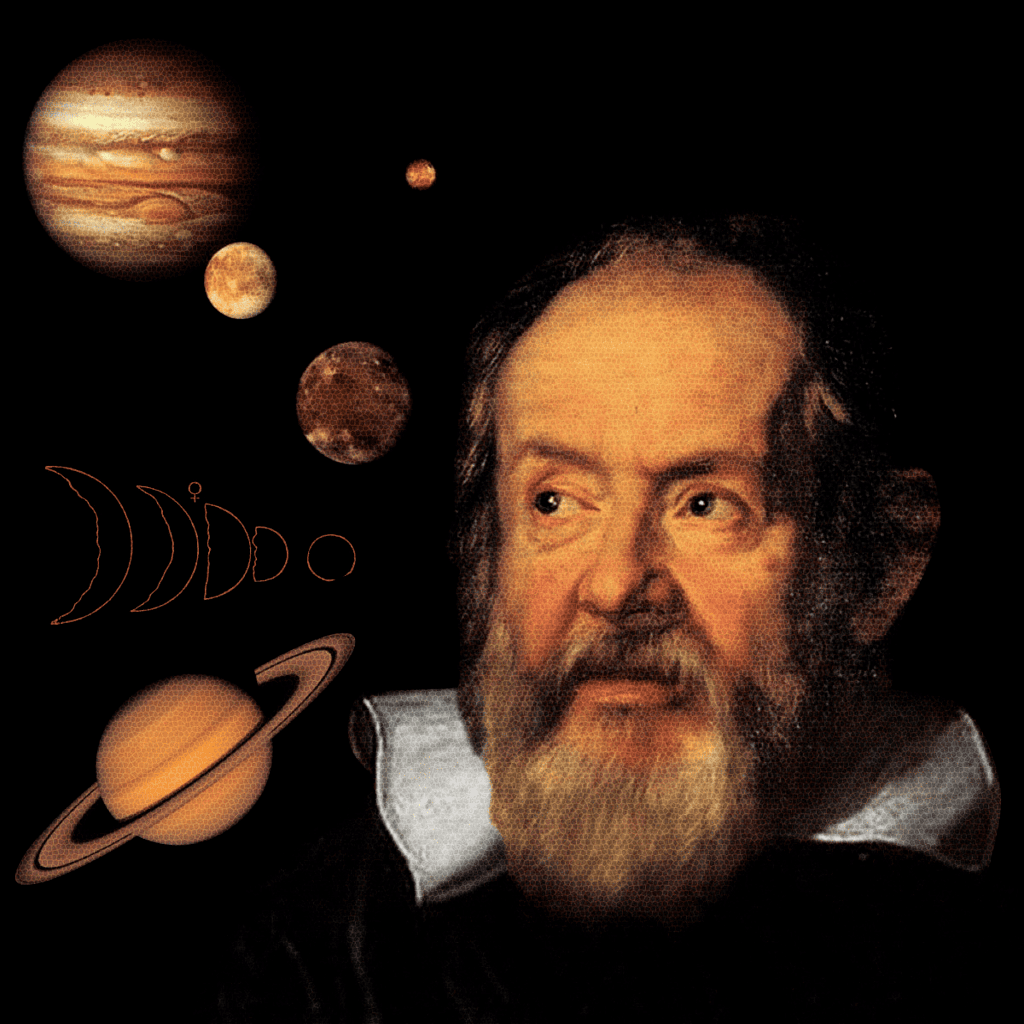
- Advancements in Astronomy
- Tycho Brahe's detailed observations (1570-1601) and Johannes Kepler's laws of planetary motion (1609-1619).
- Christiaan Huygens and Giovanni Cassini discovering Saturn's largest moons (1655-1686).
- Isaac Newton's law of gravitation (1687) explained planetary orbits.
- Further Discoveries
- William Herschel's discovery of Uranus in 1781.
- Urbain Le Verrier's prediction and Johann Galle's discovery of Neptune in 1846.
The Formation of Planets
- Scientists study our Solar System to understand planetary formation processes.
- A solar nebula, a cloud of dust and gas, is believed to be the origin of our Solar System.
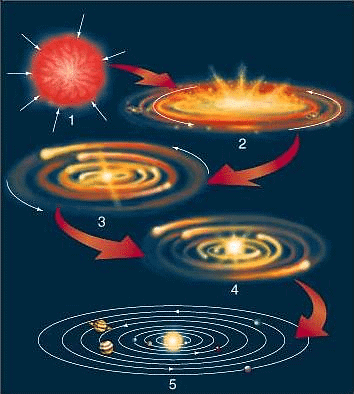
- Gravity caused the dust and gas in the nebula to form a spinning center that eventually became the Sun.
- Smaller 'balls' in the outer disk of the nebula evolved into the planets through gravitational forces.
Formation of Inner Planets
- The four inner planets (Mercury, Venus, Earth, Mars) are rocky worlds that formed closer to the Sun.
- Initially, small pieces of rock gathered and collided to form larger rocky 'balls' over time.
- Meteorites falling to Earth are remnants from the early stages of the Solar System's formation.
Formation of Outer Planets
- The outer planets (Jupiter, Saturn) are gas giants made mostly of gases and are much larger than the inner planets.
- Gravity near their centers may compress the gases into a liquid or solid core.
- The exact composition of the gas giants' cores remains uncertain due to the extreme conditions.
Gravity and Planetary Cohesion
- Gravity plays a crucial role in holding planets together by preventing the separation of rock, dust, and gas.
Ongoing Research
- Advancements in technology have enabled the observation of planets orbiting stars beyond our Solar System.
- Scientists continue to analyze data from these exoplanets to enhance their understanding of planetary formation.
Water in the Earth's Oceans
- The Earth's oceans, despite being less familiar than its land areas, actually cover more than 68% of the planet's surface.
- Gravity pulls water towards the Earth's center, with the rock beneath the oceans and the surrounding continents acting as a containment boundary.
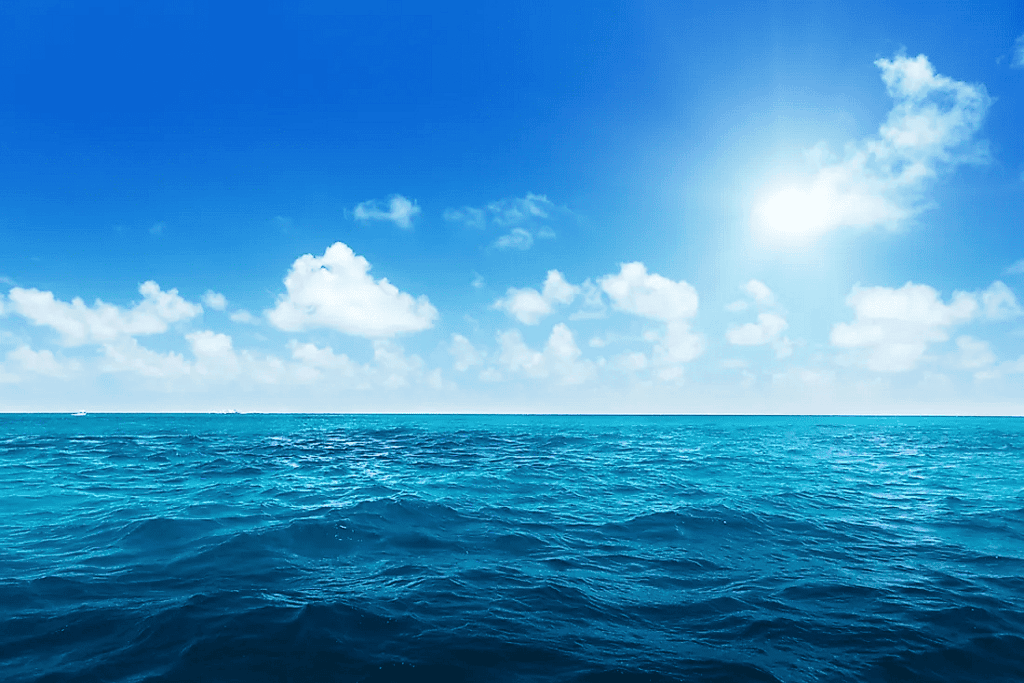
- The term "sea level" denotes the height that seawater reaches against the "walls" of this containment - the coastlines of continents.
High Tide and Low Tide
- At a beach, one can observe fluctuations in sea levels throughout the day, with high tides and low tides.
- High tide signifies the sea reaching the highest point on the beach, while low tide indicates the sea receding farthest from the beach's top.
- High tides generally occur every approximately 12 hours, with slight daily variations, whereas low tides follow high tides by about 6 hours.
The Effects of the Moon
- The gravitational force on Earth's oceans is primarily due to the Earth's gravity.
- Additionally, the Moon exerts a smaller gravitational force on the oceans.
- The Moon's gravity affects both the land and the oceans, causing the oceans to bulge due to their liquid nature.
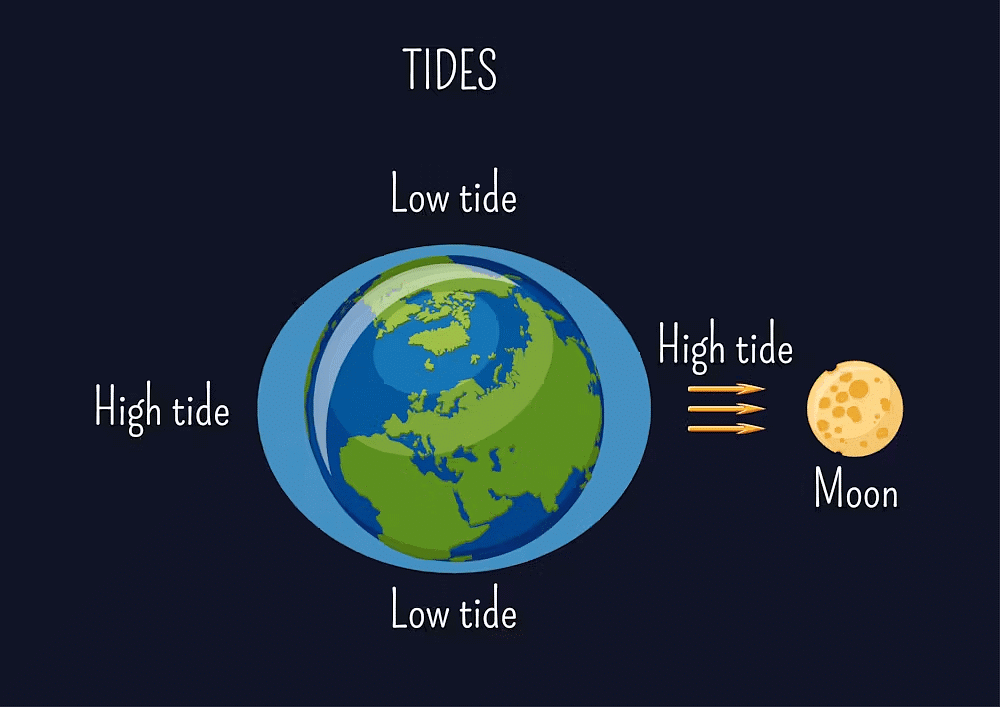
- Objects with mass exhibit inertia, resisting changes in motion. This is similar to how water bulges in response to the Moon's gravity.
- The combined forces of gravity and inertia result in tidal bulges in two main regions:
- Around the point closest to the Moon.
- Around the point farthest away from the Moon.
- Due to the Earth's rotation, tidal bulges move across the Earth's surface, occurring approximately every 12 hours.
- High tide corresponds to the bulging of water towards the Moon, while low tide occurs approximately 6 hours later.
The effects of the Sun
- There is an additional factor influencing tides besides the Moon, which is the gravitational pull of the Sun affecting Earth's oceans. Although this effect is present, it is notably smaller compared to the Moon's influence.
- Typically, these solar effects on tides go unnoticed; however, there are specific scenarios where their impact becomes more pronounced.
- It's crucial to recall that the Moon completes an orbit around the Earth approximately every 28 days.
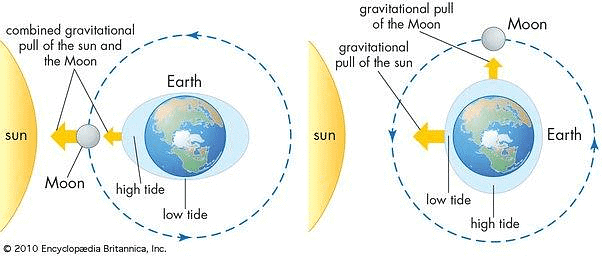
Spring Tide
- At times, the gravitational forces exerted by both the Moon and the Sun align in the same direction. This alignment results in larger tidal bulges, causing high tides to advance further onto a beach. This phenomenon is known as a spring tide.
Neap Tide
- In contrast, there are instances when the gravitational forces from the Moon and the Sun act perpendicularly to each other. This configuration leads to smaller tidal bulges, causing high tides to reach a lesser extent on a beach. Such a tide is referred to as a neap tide.
Solar Eclipses
Solar eclipses occur when the Moon passes between the Earth and the Sun, blocking sunlight from reaching certain parts of the Earth. The alignment of the Moon's orbit with Earth's equator and the tilt of Earth's axis create this phenomenon.
The Moon's Size Relative to the Sun
- The apparent sizes of the Moon and the Sun are similar when viewed from Earth due to the ratios between their distances from Earth and their physical sizes.
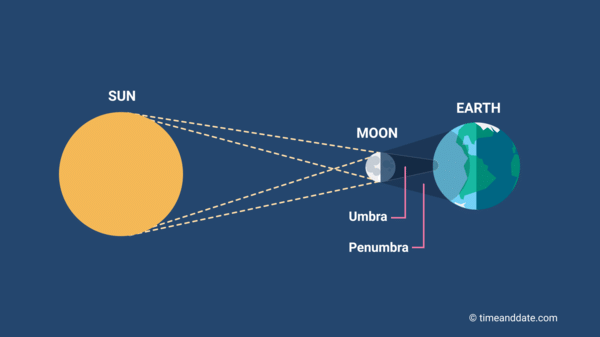 Solar Eclipse
Solar Eclipse
Total Solar Eclipses
- During a total solar eclipse, the Moon fully obstructs the Sun's light in a small region on Earth, leading to a brief period of darkness during daylight hours.
- Spectacular effects of a total solar eclipse include star visibility, animal behavior changes, the display of the Sun's outer atmosphere, and the phenomenon known as the diamond ring effect.
Partial Solar Eclipses
- In a partial solar eclipse, only a portion of the Sun's light is blocked, causing the Sun to appear as if a 'bite' has been taken out of it when observed from Earth.
Shadow Regions: Umbra and Penumbra
- The umbra, a deep shadow cast by the Moon, falls on a small area of Earth's surface during a total solar eclipse, offering viewers an experience of complete darkness.
- Surrounding the umbra is the penumbra, an area where only a portion of the Sun's light is obstructed, resulting in a partial solar eclipse for observers within this region.
Lunar Eclipses
- Sometimes, the Moon's orbit positions it within Earth's shadow, resulting in a lunar eclipse.
- During a lunar eclipse, Earth blocks most of the Sun's light from reaching the Moon.
- The Moon does not appear completely dark during a lunar eclipse because some of the Sun's light passes through Earth's atmosphere.
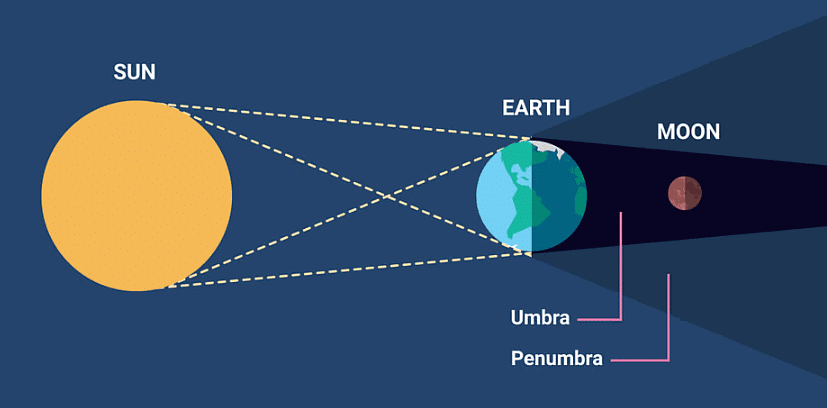 Lunar Eclipse
Lunar Eclipse
- Earth's atmosphere bends the light, giving it an orangey-red hue, which is then reflected off the Moon's surface.
- Due to its larger size, Earth blocks the Sun's light for a longer duration during a lunar eclipse compared to a solar eclipse.
- Lunar eclipses can be observed from a larger area on Earth than solar eclipses.
Types of Lunar Eclipses
- A total lunar eclipse occurs when the Moon is entirely covered by Earth's shadow.
- A partial lunar eclipse happens when only a portion of the Moon is covered by Earth's shadow.
|
237 docs|47 tests
|
FAQs on The Earth in Space Chapter Notes - Preparation for EmSAT Grade 6
| 1. What is the role of the Moon in relation to the Earth in space? |  |
| 2. How do solar eclipses occur in the Earth's space system? |  |
| 3. How does the Sun impact the Earth's environment and climate? |  |
| 4. What is the significance of water in the Earth's oceans in relation to space? |  |
| 5. How do lunar eclipses differ from solar eclipses in terms of their occurrence and impact on Earth? |  |















